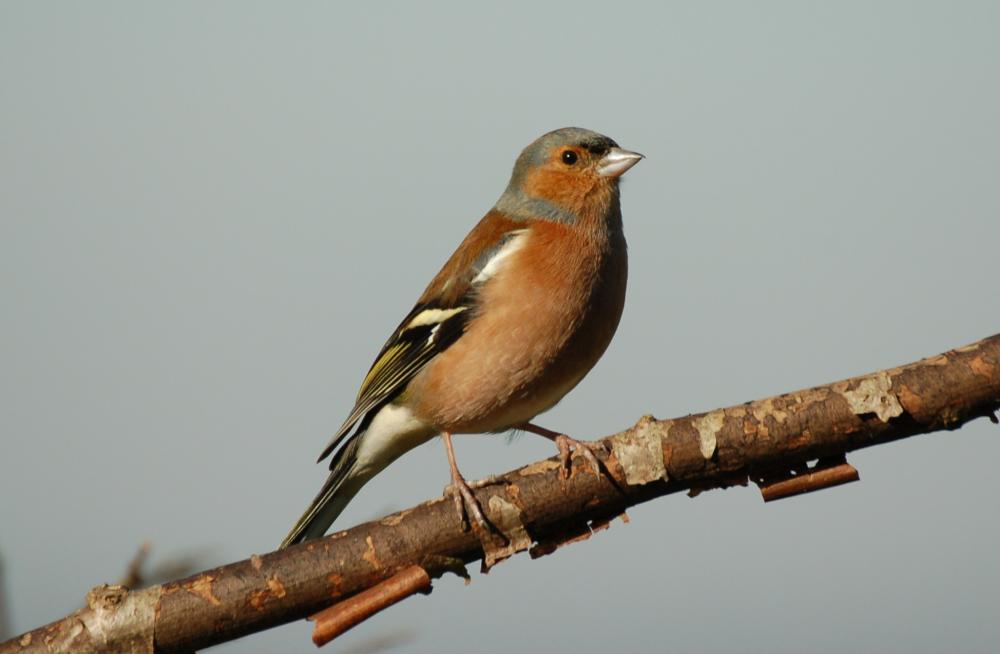
Farmers and landowners are being urged to dust down the binoculars as the Big Farmland Bird Count returns for its fifth year.
The event, which will take place from Friday 9 February to Sunday 18 February, aims to carry on farmers "tremendous work" of boosting farmland birds.
Run by the Game & Wildlife Conservation Trust (GWCT), it returns for its fifth consecutive year.
Many farmers and gamekeepers will record farmland birds such as barn owls, bullfinch, lapwing, grey partridge, tree sparrow and yellowhammer on their land.
The Count is seen as an opportunity to tell the wider world about the birds on farm and British wildlife in general.
'Tremendous work'
It takes 40 minutes to take part in the count, and founder Jim Egan is hoping for a big turnout.
“A great number of farmers and keepers are doing tremendous work to boost farmland birds and other wildlife,” Mr Egan explained.
“As well as planting seed mixes to provide winter feed, they also leave weedy stubbles over-winter, manage hedgerows so as to leave berries for food, and supplement this by putting out mixed seeds and grain on tracks and field margins.
“However, not everyone appreciates the extent to which farmers and keepers are managing existing habitats and creating new ones specifically to help our farmland birds. Now is the time to change all that.”
'Optimistic'
Mr Egan is head of training and development at the GWCT’s Allerton Project, where research has identified how to bring bird numbers back on productive farmland.
The number of birds present there has been doubled by adapting a management system originally developed for gamebirds.
Whilst Mr Egan notes that each farmer has their own approach to wildlife conservation, he said the overall "hard work" being undertaken by farmers makes the situation "optimistic" for the future of farmland birds.
Amid the work done by farmers and landowners, official figures by Defra show that farmland bird numbers have declined by almost a tenth from the years between 2010 and 2015.
However, if farmers are given more funding and support this could reverse, according to Natural England and Defra.
They say farms involved in Higher Level Stewardship (HLS) agreements show that 12 of the 17 priority farmland bird species showed a positive change in abundance, going against the 56% decline in the number of farmland birds nationally since 1970.
'Citizen science'
Mike Green, environmental and stewardship manager at BASF, the main sponsor of the BFBC, said the Count uses "citizen science" to demonstrate the range of species that depend and live on British farmland during the winter months.
He said: “BASF is really excited about the continued involvement in this important initiative and is keen to help farmers show the quality of environmental work they can deliver.”
Guy Smith, vice president of NFU, said: “Farmers manage 70% of our iconic landscape and are committed to the environment. 10,000 football pitches worth of flower habitat have been planted, creating homes for wildlife, while more than 30,000km of hedgerows have been planted and restored.
“This year’s Big Farmland Bird Count provides farmers with another great opportunity to show that we are fully engaged with conservation.
“I would encourage as many farmers as possible to get the binoculars out, dust off the notepad, sharpen the pencil and get recording as you go out and about on the farm.”
Red List species
Last year, 970 farmers and keepers took part and recorded 112 species across 900,000 acres.
They recorded 22 Red List species including fieldfare, tree sparrow, starling, yellowhammer and song thrush.
There were wood pigeon, woodpecker, pheasant and grey partridge recorded. The count aims to help farmers and keepers build a record of birds on their farm so they can, where necessary, target their conservation work.
CLA vice president Mark Tufnell said: “Anyone who works on and cares for the land is vital in helping to ensure the future survival of many of the country’s most cherished farmland bird species, so the more people we have participating the better.”
At the end of the count, the results will be analysed by the Trust. All participants will receive a report on the national results once they have been collated.
